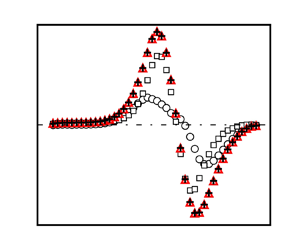Article contents
The mean wall-normal velocity in turbulent boundary layer flows under pressure gradient
Published online by Cambridge University Press: 16 November 2023
Abstract

Using a combination of proper variable transformation and integral methods, we rigorously derive an analytical formulation for the mean wall-normal velocity in turbulent boundary layers (TBLs) subjected to arbitrary pressure gradients. The accuracy and robustness of this novel formulation are validated extensively through comparisons with two independent sets of numerical simulation data, demonstrating excellent agreement in both near-equilibrium and non-equilibrium TBLs. In addition, the robustness of the analytical formulations to various choices of boundary-layer edge definition is further confirmed in non-equilibrium TBLs. Our formulation includes a streamwise derivative term, which has minimal significance in near-equilibrium TBLs but plays a crucial role in determining the mean wall-normal velocity in non-equilibrium TBLs. Moreover, we investigate the physical significance of the pre-factors associated with the mean wall-normal velocity components, and unveil a close connection between a previously defined pressure gradient parameter and the ratio of these pre-factors in the analytical equation governing the mean wall-normal velocity. The insights gained from the examination of the pre-factors and their connection to the pressure gradient parameter offer valuable knowledge for interpreting and predicting the behaviour of turbulent boundary layers in various practical applications.
JFM classification
- Type
- JFM Papers
- Information
- Copyright
- © The Author(s), 2023. Published by Cambridge University Press
References
- 2
- Cited by





